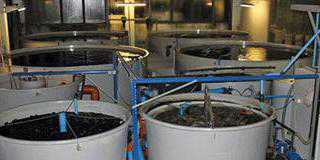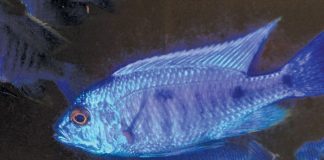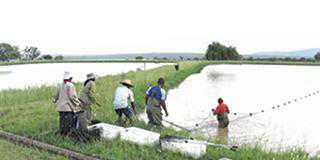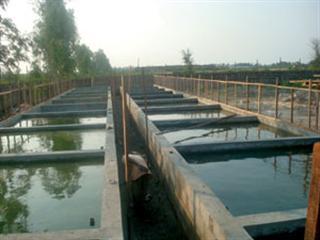
Some people have attempted to write off tilapia farming in South Africa, saying that with the use of Nile tilapia illegally here, no other tilapia species is worth growing – and, anyway, our climate is too cool for tilapia aquaculture to be economically viable. However, a closer examination of the facts reveals that the reason for the failure of tilapia farming in SA is much more complex – yet not insurmountable.
Tilapia aquaculture worldwide has concentrated on the Nile tilapia (Oreochromis niloticus). Regarded as the best growing species available, it’s been the focus of much research and development for the past 20 years. Genetically improved farmed tilapia (GIFT) and several other strains have been developed that will grow at an average rate of 2,5g to 3g a day under optimal conditions, resulting in a harvestable fish in six to nine months, depending on the size required.
But this is not to say that other species don’t also have potential, provided the strain is selected carefully. In the US and southern Malawi, for example, our indigenous Mozambique tilapia (O. mossambicus), has been cultured with growth rates of up to 2,8g a day combined with other attributes such as salinity and cold tolerance. Red tilapia, which are based on O. mossambicus, are also being developed with acceptable growth rates, good body shape and attractive colouration.
Water temperature
Tilapia need temperatures of 26-30°C for maximum growth (see Figure 1). In outdoor ponds in South Africa, this restricts maximum growth to only a few months during summer, from November to February. Therefore pond-aquaculture of tilapia isn’t viable in this country.
However, tunnel aquaculture is. That is, using greenhouse tunnels to elevate the water temperature by 6-9°C without additional energy costs. Tunnels are widely used for rearing tilapia in Israel and Egypt as well as in Brazil – all countries with climates like our own. The tunnels use water re-circulating systems wherein a high degree of control is exercised over the aquatic environment to achieve near optimum growth conditions for the fish.
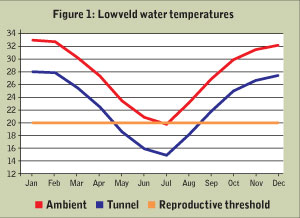
Water temperatures in outdoor and tunnel aquaculture shallow-pond conditions in the warmer parts of South Africa. Courtesy of Nicholas James
Fundamentals
Unfortunately, several non-negotiable fundamentals have been repeatedly ignored whenever tilapia farming with re-circulating aquaculture systems (RAS), has been promoted in SA:
- Filtration is essential, and is the life-blood of the system.
- Running costs (especially electricity consumption) must be kept low.
- System design must be appropriate to tilapia farming – robust, yet simple.
- Tunnels must be designed for optimal temperatures for the fish, not for the comfort of the workers. Often tunnel systems are installed to warm the water, yet covered with shade cloth – which cools it down again.
- You also find tunnels where the plastic doesn’t come down to the ground at the sides, as in vegetable-growing systems. Or, the structure is open at the ends. These are a waste of time and money.
- Tunnels need to be sealed all-round to retain that essential energy received free from the sun. Bricking up the ends and having walls and windows extending the length of the tunnel is highly recommended, as this will increase the heat build-up.
Bottom line
As noted, if a tunnel is well built, a temperature increase of up to 9°C can be achieved, obviating the need for expensive heat-pumps. The bottom line in any RAS is its set-up cost, its running costs, and its efficiency. There’s no need to use costly, complicated and inadequately designed filtration systems, and expensive (and often unsuitable) pre-fabricated tanks. And this is where most SA systems seem to fail.
Nicholas James is an ichthyologist and hatchery owner. Contact him at [email protected]. Please state ‘Aquaculture’ in the subject line of your email.
This article was originally published in the 12 October 2012 issue of Farmer’s Weekly











